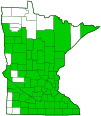slippery elm
(Ulmus rubra)
Conservation • Wetland • Description • Habitat • Ecology • Use • Distribution • Taxonomy
Description |
||
Slippery elm is a fast growing deciduous tree in the Mountain Elm group. In Minnesota mature trees are usually 50′ to 70′ tall. Large individuals can reach up to 135′ in height and 48″ in diameter at breast height. It was once a long-lived tree, often reaching 200 years. However, the wilt fungus Dutch Elm Disease (Ceratocystis ulmi) usually kills most trees before they are 30 years old. Saplings are immune to the disease. The trunk divides at or below the base of the crown into a few large, upright, widely spreading limbs. The principle branches curve upwards then spread out. The crown is broad and flat-topped. The bark on young trees is brownish gray and corky. On older trees it is reddish-brown, shallowly fissured with flat, nearly vertical scaly ridges. In cross section outer bark layers are entirely reddish brown. The twigs are grayish-brown to dark gray, moderately stout, and hairy, with prominent lenticels. The buds are dark reddish-brown, blunt, and covered with conspicuous orange or reddish-brown hairs. The leaves are deciduous, alternate, and simple, and are attached to the twig on a 3 ⁄16″ long leaf stalk. The blades are thick, egg-shaped or inversely egg-shaped, 3″ to 6″ long, and 2″ to 3″ wide. They taper gradually to a point at the tip with concave sides along the tip. The base is asymmetrical, rounded on one side, tapering on the other. The upper surface is dark green, hairy, and very rough. The lower surface is paler green and hairy, often fuzzy. The margins are singly toothed on the lower half or quarter, doubly toothed from there to the tip, the major teeth deeper and forward pointing. There are about 15 prominent veins on each side of the central axis. The veins are straight and end in a large tooth. Several veins are forked. In the fall the leaves turn yellow. The flowers have both male and female parts. They are borne in small, dense clusters of 8 to 20 almost stalkless flowers on previous year’s twigs. They appear in late March to late mid-May before the leaves. They have no petals, 5 to 9 stamens with reddish anthers, and pink reddish stigmas. The fruit is a samara consisting of a dry, flattened, papery, almost round, ⅜″ to ⅝″ in diameter wing surrounding a seed seed case containing 1 seed. It is hairy on the surface but does not have a fringe of hairs on the margin. The tip is shallowly notched. There is a line that extends from the base to the notch at the tip. The wing is not inflated and the seed case is distinct from the wing. |
||
Height |
||
50′ to 70′ |
||
Record |
||
The champion slippery elm in Minnesota is on private property near Minneapolis, in Hennepin County. In 2019 it was measured at 86′ tall and 236″ in circumference (75.1″ in diameter), with a crown spread of 90.75′. |
||
Flower Color |
||
|
||
Similar Species |
||
American elm (Ulmus americana) branches are gracefully spreading. The buds are appressed to the twig, sharp pointed, are flattened. No more than 2 or 3 leaf veins are forked. Flowers and fruits are on long stalks. The samara is deeply notched and hairless except for a fringe of hairs along the margin. It is not inflated, and the seed case is distinct. Rock elm (Ulmus thomasii) trunk is distinct almost to the top of the tree. The branches are often crooked and gnarled. Older twigs have prominent corky ridges. The leaves are shiny and smooth. The margins have incurved teeth. The leaf veins are rarely forked. The buds are sharp pointed. Flowers and fruits are in clusters with a central stem. The samara is pointed, shallowly notched, and hairy, with an additional fringe of hairs along the margin. It is inflated, the seed case not distinct. |
||
Habitat |
||
Moist. Deciduous forests, stream banks, floodplains. Full sun or light shade. |
||
Ecology |
||
Flowering |
||
Late March to late mid-May |
||
Pests and Diseases |
||
Elm leafminer (Fenusa ulmi) creates mines in the leaves in the spring. The damaged portion turns brown and falls off. |
||
Use |
||
|
||
Distribution |
||||
|
Sources |
|||
| 6/17/2023 | ||||
Nativity |
||||
Native |
||||
Occurrence |
||||
|
||||
Taxonomy |
|||
| Kingdom | Plantae (Plants) | ||
| Division | Tracheophyta (Vascular Plants) | ||
| Subdivision | Spermatophytina (Seed Plants) | ||
| Class | Magnoliopsida (Dicots) | ||
Order |
Rosales (Roses, Elms, Figs, and Allies) | ||
Family |
Ulmaceae (elm) | ||
Genus |
Ulmus (elms) | ||
| Subgenus | Ulmus | ||
| Section | Ulmus | ||
Subordinate Taxa |
|||
|
|||
Synonyms |
|||
| Ulmus fulva | |||
Common Names |
|||
gray elm red elm slippery elm soft elm water elm |
|||
Glossary
Catkin
A slim, cylindrical, drooping cluster of many flowers. The flowers have no petals and are either male or female but not both.
Lenticel
A corky, round or stripe-like, usually raised, pore-like opening in bark that allows for gas exchange.
Samara
A dry fruit consisting of a seed attached to a papery wing; one seeded in Elms and Ashes, two-seeded in Maples.
Simple leaf
A leaf that is not divided into leaflets, though it may be deeply lobed or cleft.
Visitor Photos |
|||||
Share your photo of this plant. |
|||||
| This button not working for you? Simply email us at info@MinnesotaSeasons.com. Attach one or more photos and, if you like, a caption. |
|||||
Randy |
|||||
Slippery elm in an old growth grove near MN/IA border, Nov. 2016 |
|||||
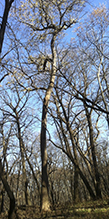 |
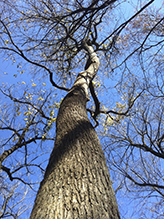 |
||||
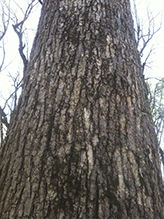 |
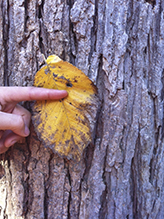 |
||||
Slippery elm trunk |
|||||
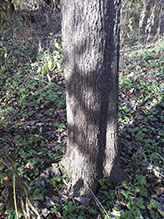 |
|||||
Slippery elm bark |
|||||
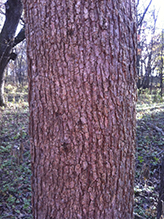 |
|||||
MinnesotaSeasons.com Photos |
|||||
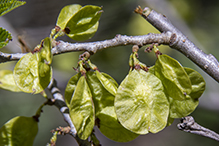 |
|||||

Slideshows |
||

Visitor Videos |
|||
Share your video of this plant. |
|||
| This button not working for you? Simply email us at info@MinnesotaSeasons.com. Attach a video, a YouTube link, or a cloud storage link. |
|||
Other Videos |
|||
| Trees with Don Leopold - slippery elm ESFTV |
|||
About
Published on Jun 27, 2012
|
|||
| How to find the right tree (Slippery Elm tree identification) when hunting for morel mushrooms. Craig Smedley |
|||
About
Published on Apr 25, 2013 This shows the perfect slippery elm tree that you look for when hunting for morel mushrooms. Also the American Elm and Yellow Poplar are good trees to look for in the Midwest. |
|||

Visitor Sightings |
|||||
Report a sighting of this plant. |
|||||
| This button not working for you? Simply email us at info@MinnesotaSeasons.com. Be sure to include a location. |
|||||
| Randy November 2016 |
Location: near MN/IA border Slippery elm in an old growth grove |
 |
|||
MinnesotaSeasons.com Sightings |
|||||

|
Created: Last Updated: © MinnesotaSeasons.com. All rights reserved. |
